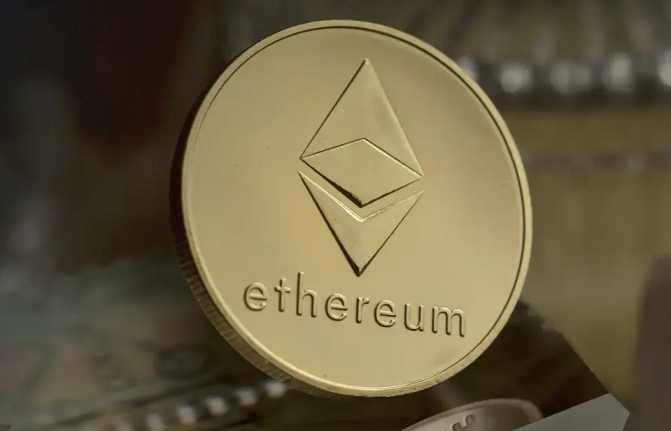ETHEREUM USERS PAY ONLY $0.04 PER TRANSACTION AMID REDUCED ACTIVITY
The Dencun upgrade in 2024 significantly reduced fees for layer-2 solutions but also caused Ethereum’s base-layer revenue to drop by 99%, raising questions about the network’s long-term sustainability.
Ethereum network fees have now plunged to some of their lowest levels in years, with gas prices falling to 0.067 Gwei on Sunday as on-chain activity slowed following October’s market-wide crash. This marks a notable cooldown for the world’s second-largest blockchain after a volatile start to Q4.
Crypto Market Stalls Ahead of U.S. CPI Data—BTC, ETH, SOL, and BNB Unchanged
According to Etherscan, executing a token swap on Ethereum now costs just $0.11, while the average NFT sale carries a fee of $0.19, making transactions more affordable for users than ever before.
Ethereum Bridge Fees Drop to Just $0.04 After October Market Volatility
Ethereum users are now paying as little as $0.04 to bridge assets to other blockchains, while on-chain borrowing costs around $0.09.
This is a dramatic decline from October 10, when gas prices spiked to 15.9 Gwei during a flash crash that wiped out over 90% of value in some altcoins in a single day.
The network stabilized quickly. By October 12, gas prices had fallen to 0.5 Gwei and have remained under 1 Gwei for most of October and November, offering relief to traders and DeFi users alike.
Traders Pull Bitcoin from Binance, Hinting at Strong Holding Trend—$130K Ahead?
Ethereum’s Low Fees Improve Accessibility but Raise Sustainability Concerns
While the recent drop in Ethereum fees has made transactions cheaper than ever, analysts warn that the network’s long-term sustainability could be tested if low fees persist.
During the 2021 bull run, base-layer transaction costs often exceeded $100–$150, prompting users to seek cheaper alternatives and layer-2 solutions. Since the Dencun upgrade in March 2024, which optimized gas for layer-2 rollups, Ethereum’s base-layer fee revenue has collapsed by 99%, according to Token Terminal.
Lower fees make Ethereum more accessible to users, but they also reduce income for validators, the participants who secure the network and process transactions. Without sufficient incentives, the network could face financial and security pressures over time.
Research from Binance describes this as a “double-edged sword.” While Ethereum’s layer-2 ecosystem—including networks like Arbitrum, Optimism, and Base—has improved scalability, it has also cannibalized much of Ethereum’s own base-layer revenue.

Ethereum Faces Fee Challenges as MEV Fraud Trial Ends in Mistrial
Traders are currently enjoying near-free Ethereum transactions, but analysts warn that if network activity and fees don’t recover, Ethereum’s economic model could face renewed scrutiny. Rival blockchains continue to attract developers and users with lower-cost, high-throughput alternatives, intensifying the pressure.
In a separate development, a landmark US federal case involving Ethereum MEV (maximal extractable value) fraud has ended in a mistrial. Brothers Anton and James Peraire-Bueno were accused of stealing $25 million through an alleged exploit on the Ethereum blockchain.
This was the first criminal prosecution involving MEV, where traders profit from the order of transactions on the network. Prosecutors claimed the brothers manipulated Ethereum’s validator layer to reorder transactions and drain funds, calling it “the first exploit of its kind.” The defense argued they operated within Ethereum’s internal rules, not outside the system.
After three days of deliberation, the jury was exhausted and divided, leading Judge Jessica Clarke to declare a mistrial, leaving the case unresolved.
Faqs
Question 1: Why are Ethereum transaction fees currently very low?
Answer: Ethereum fees have dropped due to reduced network activity following October’s market crash. The Dencun upgrade also optimized gas for layer-2 rollups, making transactions cheaper but reducing base-layer revenue.
Question 2: What are the potential concerns with Ethereum’s low fees?
Answer: While low fees improve user accessibility, they drastically reduce validator income, threatening the network’s long-term financial and security sustainability. Without higher fees, Ethereum could face economic pressure.
Question 3: How do layer-2 solutions affect Ethereum’s revenue?
Answer: Layer-2 networks like Arbitrum, Optimism, and Base improve scalability and reduce transaction costs, but they cannibalize base-layer revenue, limiting income for validators and stressing Ethereum’s economic model.
Question 4: What happened in the Ethereum MEV fraud trial?
Answer: Brothers Anton and James Peraire-Bueno were accused of exploiting Ethereum’s validator layer to steal $25 million. After three days of jury deliberation, the case ended in a mistrial because jurors were divided and exhausted.
Question 5: Why is the MEV trial significant?
Answer: It was the first criminal prosecution involving MEV, where traders profit from transaction ordering on Ethereum. The trial raised questions about what constitutes acceptable behavior within Ethereum’s protocol rules.






